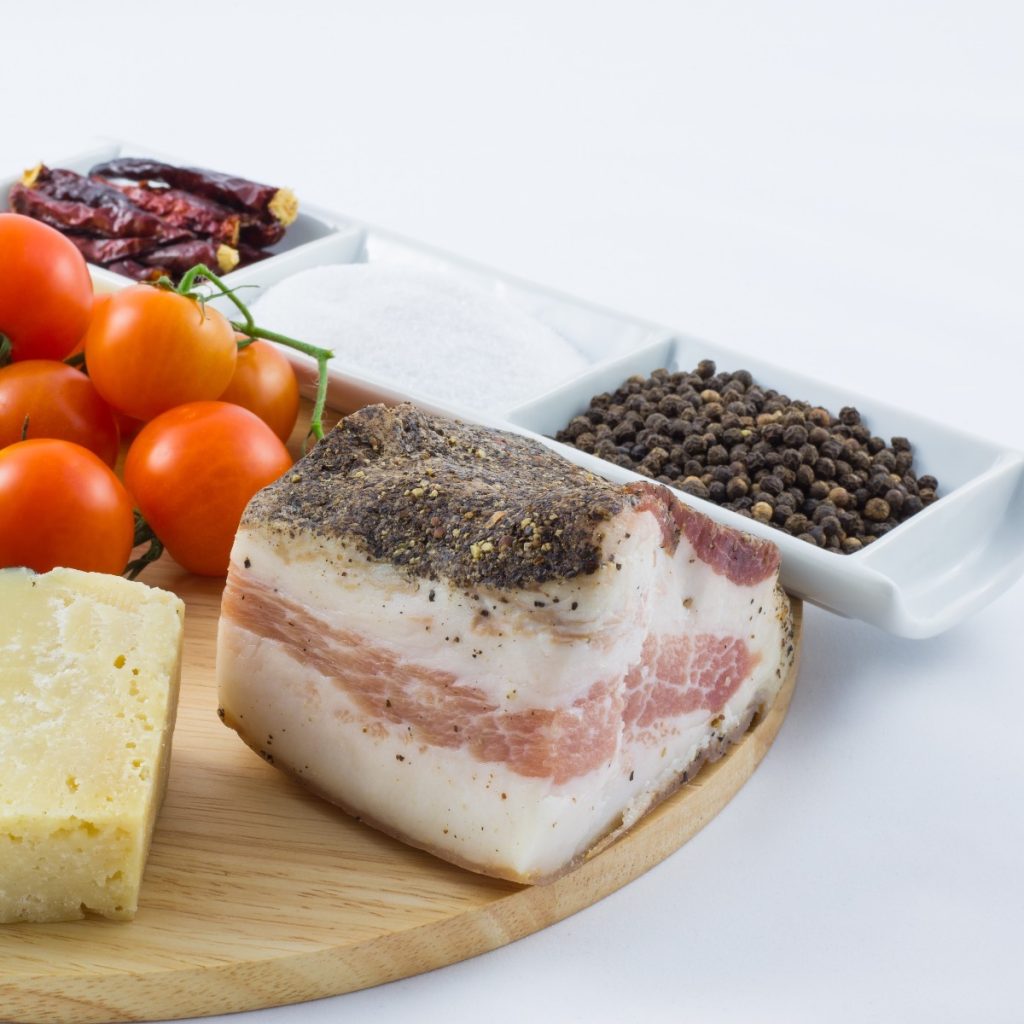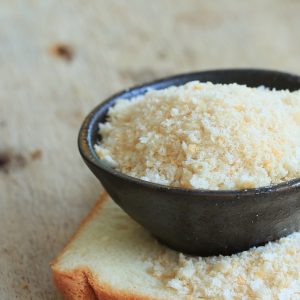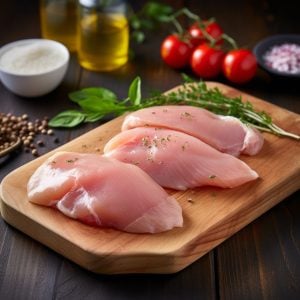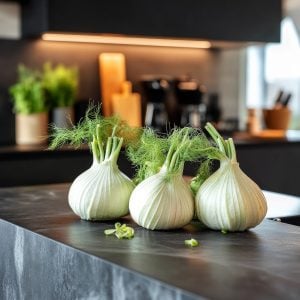What Is Guanciale and How to Cook With It
Guanciale (gwahn-CHAH-leh) is a type of cured meat made from a pig’s jowl or cheek. It is an essential ingredient in many traditional Italian dishes, particularly in the central regions of Lazio and Umbria. It is also a staple in pasta dishes like spaghetti alla carbonara and bucatini all amatriciana.
Making it involves salting and curing the meat for several weeks, during which time it develops a rich, savory flavor and a firm texture. The resulting product resembles pancetta or bacon but has a more pronounced pork flavor and slightly firmer texture.
Because of its unique flavor and texture, guanciale is highly sought after by chefs and home cooks alike. Its high-fat content and intense flavor make it an excellent ingredient for adding depth and complexity to various dishes, from classic Italian pasta to soups, stews, and even sandwiches.
While guanciale is most commonly associated with Italian cuisine, it has become increasingly popular in other parts of the world in recent years. Its distinctive flavor and texture make it a favorite of food enthusiasts and home cooks alike, who use it to add a touch of authentic Italian flavor to their dishes.
It is a delicious and versatile cured meat essential to many traditional Italian dishes. Its rich, savory flavor and firm texture make it an excellent addition to various recipes, from classic pasta to soups, stews, and sandwiches. Guanciale is a must-try ingredient whether you are a seasoned chef or a home cook looking to add authentic Italian flavor to your cooking.
Recipes Featuring Guanciale
| Recipe | Description | Why Use Guanciale |
|---|---|---|
| Spaghetti alla Carbonara | A Roman pasta dish made with eggs, Pecorino Romano, black pepper, and guanciale. No cream added. | Guanciale adds a rich, fatty depth that crisps perfectly and infuses the sauce with savory flavor. It's traditional and key to authenticity. |
| Bucatini all’Amatriciana | Tomato-based pasta sauce with Pecorino Romano, chili, and guanciale. Typically served with bucatini. | Guanciale’s rendered fat balances the acidity of tomatoes and brings a smoky, porky intensity to the sauce. |
| Pasta alla Gricia | Often called the "white Amatriciana," this simple Roman dish uses guanciale, Pecorino Romano, and black pepper without tomato. | As one of the oldest Roman pasta dishes, it showcases guanciale as the centerpiece, offering a crispy texture and savory richness. |
| Bruschetta with Guanciale and Ricotta | Toasted bread topped with creamy ricotta and crispy guanciale bits, sometimes with honey or figs. | Guanciale adds a salty, meaty crunch that contrasts beautifully with the creamy ricotta and sweet toppings. |
| Guanciale and Egg Frittata | A hearty Italian-style omelet featuring beaten eggs and crispy bits of guanciale. | The rendered fat flavors the entire frittata, while the crispy guanciale adds textural contrast and deep umami notes. |
| Guanciale Pizza (Pizza alla Carbonara) | Pizza topped with egg yolk, Pecorino, black pepper, and guanciale—mimicking the flavors of carbonara. | Guanciale becomes crisp and caramelized in the oven, enhancing each bite with richness and smoky fat. |
Types of Guanciale
Guanciale is cured meat made from a pig’s jowl or cheek. While traditional guanciale is made with pork cheek, some variations of this cured meat use other types of meat or additional ingredients. Here are some different types of guanciale:
- Traditional Guanciale: This is made with pork cheek and is the most common type used in Italian cuisine.
- Spicy Guanciale: This type is made by adding chili flakes or other spices to the curing process, giving it a spicy kick.
- Smoked Guanciale: Some producers smoke it, giving it a smoky flavor and aroma.
- Wild Boar Guanciale: This type is made with the cheek of a wild boar, which has leaner meat and a more intense flavor than regular pork.
- Duck Guanciale: is made by curing the jowl of a duck, giving it a unique flavor that pairs well with other game meats.
- Beef Guanciale: Some producers make guanciale from beef cheek, which has a richer, beefier flavor than pork.
- Herb-Crusted Guanciale: This type is coated in a mixture of herbs and spices before being cured, giving it a unique flavor profile.

Cooking with Guanciale
Guanciale is a versatile ingredient in many dishes to add a rich, meaty flavor. Experiment with different recipes and techniques to discover new ways to enjoy this delicious ingredient.
| Idea | Tip | Example Dish |
|---|---|---|
| Use as base flavor | Render guanciale slowly over low heat to release fat—use this fat to sauté onions, garlic, or other aromatics. | Lentil soup with guanciale base |
| Replace pancetta or bacon | Use guanciale in place of pancetta or bacon for deeper flavor in pasta, salads, or savory pies. | Brussels sprouts with guanciale |
| Add to frittatas or omelets | Crisp guanciale first, then fold into eggs for a rich, smoky layer of flavor. | Potato and guanciale frittata |
| Upgrade pizza toppings | Add thin slices to pizza before baking so it renders and crisps in the oven. | Carbonara-style white pizza |
| Enhance vegetable sides | Toss guanciale bits with roasted or sautéed vegetables for added richness and texture. | Roasted cauliflower with guanciale crumbs |
| Incorporate into pasta | Cook guanciale until crisp, then toss with cooked pasta and reserved pasta water to build a sauce. | Pasta alla Gricia or Carbonara |
| Add to legume dishes | Simmer in stews or bean dishes for a meaty depth without needing stock or ham hocks. | White beans with guanciale and herbs |
| Try with crostini or bruschetta | Top grilled bread with creamy cheese and crispy guanciale for a gourmet appetizer. | Ricotta and guanciale crostini |
| Pair with sweet ingredients | Balance its saltiness with figs, honey, or fruit compotes in starters or small plates. | Fig and guanciale bites |
| Fold into risotto | Add guanciale at the end for texture or render at the start to flavor the cooking fat. | Risotto with guanciale and peas |
What’s the Difference Between Guanciale and Bacon?
Guanciale and bacon are both types of cured pork that are similar in appearance but differ in several ways.
Firstly, it is made from the jowl or cheek of the pig, while bacon is made from the belly. This means that guanciale has a higher fat content and a richer, more intense pork flavor.
Secondly, guanciale is typically cured with salt, black pepper, and other seasonings, while bacon is often smoked or flavored with different spices or sweeteners like maple syrup. This means that guanciale has a more subtle flavor profile than bacon and is better suited for dishes with a desired meaty flavor.
Finally, guanciale is typically sold in whole pieces, while bacon is sliced thinly and often pre-cooked. This means that guanciale requires some preparation before it can be used in dishes, while bacon can be used straight out of the package.
While guanciale and bacon are both delicious and versatile cured meats, they differ in flavor, fat content, and preparation. Guanciale is a staple ingredient in many classic Italian dishes, while bacon is a popular breakfast food and a versatile ingredient in many different types of cuisine.
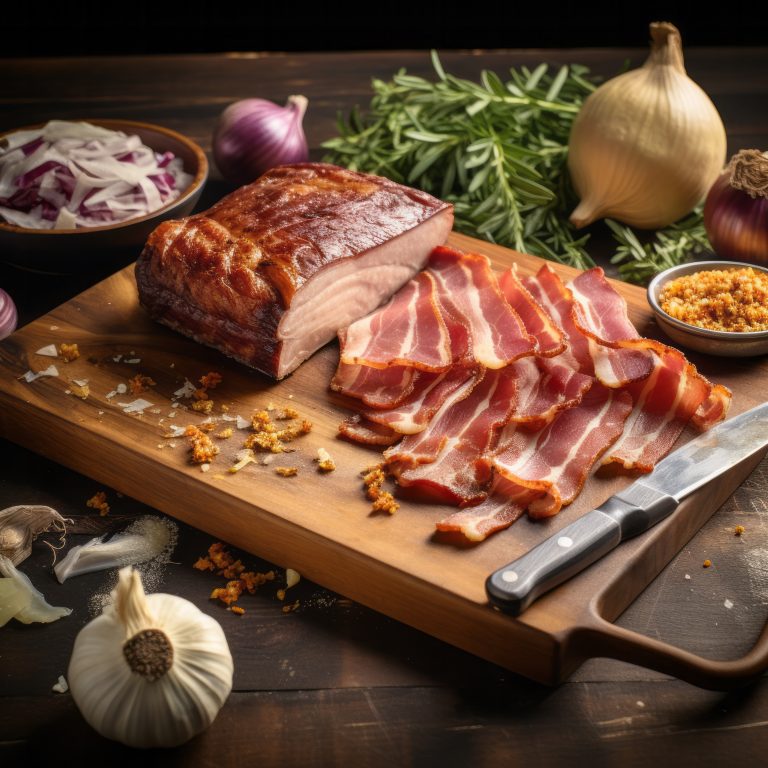
So Expensive!
Guanciale is generally more expensive than other pork products, such as bacon, because of several factors in its production.
Firstly, guanciale is made from the jowl or cheek of the pig, which is a relatively small cut of meat compared to the belly, which is used to make bacon. This means less guanciale is available per pig, which can drive up the price.
Secondly, the curing process for guanciale is quite complex and time-consuming. It typically involves rubbing the meat with a mixture of salt, black pepper, and other seasonings, then letting it hang to dry for several weeks. This means that producers must invest a lot of time and resources into each batch of guanciale they produce, which can also contribute to the higher price.
Finally, because guanciale is a traditional ingredient in many Italian dishes, restaurants and home cooks often demand it. This means that market forces can drive up the price further.
While guanciale can be expensive, it is a unique and flavorful ingredient worth the investment for many food lovers.
Where to Buy?
Guanciale can be found at specialty food stores, Italian markets, and online retailers. Here are some places to consider when looking to buy it:
- Italian markets: Italian markets often carry a variety of cured meats, including guanciale. These markets are a great source of high-quality guanciale, and you can find a local producer.
- Specialty food stores: Many specialty food stores carry it, particularly those that focus on Italian or Mediterranean cuisine. Check with your local specialty food store to see if they carry guanciale or can order it for you.
- Online retailers: Several online retailers specialize in Italian food products; many offer guanciale for sale. Some examples include Gustiamo, Eataly, and Di Bruno Bros.
- Local butchers: Some local butchers, particularly those specializing in charcuterie or cured meats, may also carry it. Check with your local butcher to see if they carry it or can order it for you.
When buying, look for a high-quality product from pasture-raised, antibiotic-free pigs. Check the expiration date and storage recommendations to ensure you get a fresh product that will last for the desired time.
Can You Cook Guanciale Like Bacon?
Yes, you can cook it like bacon. Guanciale and bacon are similar in many ways and can be cooked similarly.
To cook it like bacon, slice it thinly and place the slices in a cold pan. Turn the heat to medium and cook it, stirring occasionally, until it is crispy and golden brown. Depending on the thickness of the slices, this may take 5-10 minutes.
You can also bake it in the oven as you would with bacon. Arrange the slices on a baking sheet and bake at 375°F (190°C) for 10-15 minutes or until crispy.
Remember, it has a higher fat content than bacon, so you may not need to add more oil or butter to the pan. You should also be careful not to overcook it, as it can become rigid and chewy if cooked too long.
Overall, cooking guanciale is very similar to cooking bacon, and it can be used in many of the same ways in the kitchen.

